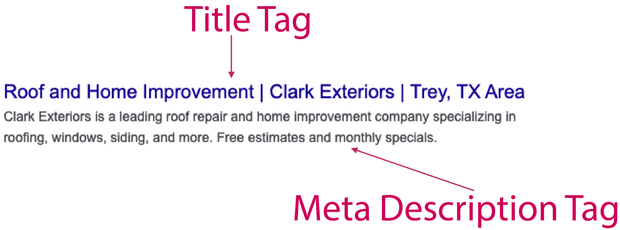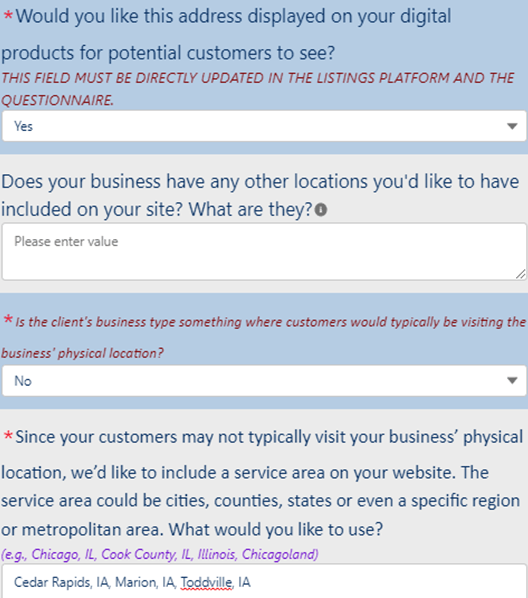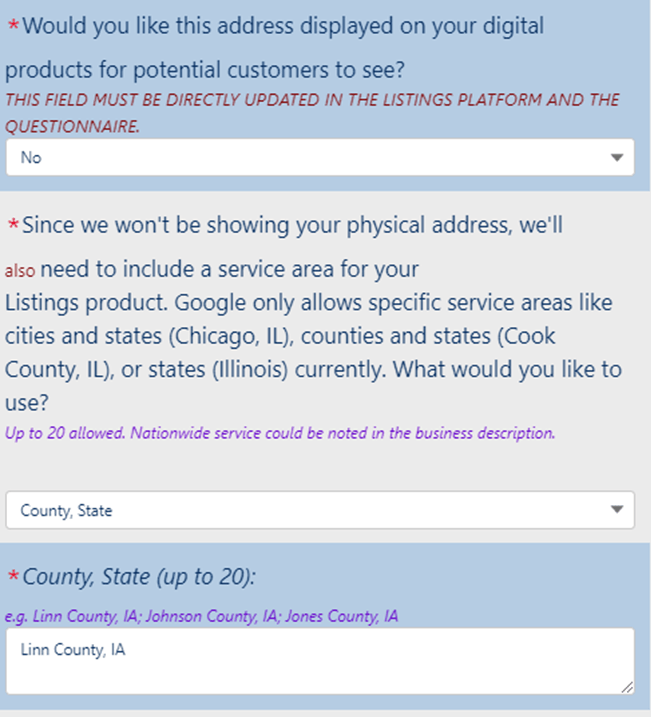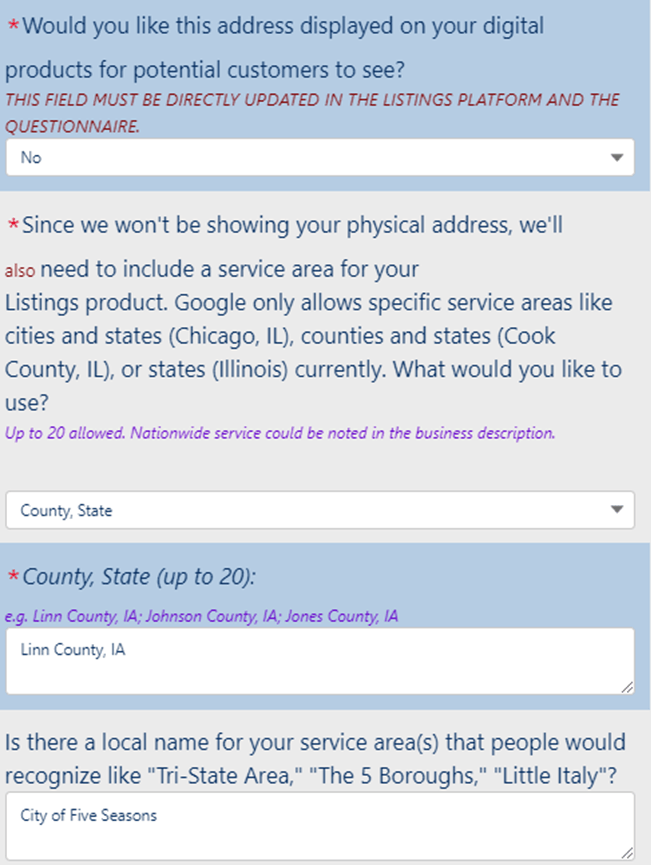QAF 624
QAF 624
v6 - February 2022
What are Title and Meta Description Tags?
Title tags and meta descriptions are snippets of the HTML code displayed on a search engine results page (SERP). The combination of title and meta description in the SERP gives a brief overview of what the web page is about, telling users and search engine crawlers more about the content on-page.

Think of the title tag as the headline that grabs the user's attention, whereas the meta description is what convinces the user to click through. So, as with the text on the page, it's important for the title and meta description to work together like an ad or call out.

Why are they Important?
Title and meta descriptions tags are essential because the included keywords in each are bold when a user searches for a query. This shows a user immediately how relevant that site is for those keywords, helping sites with the right keywords in the right places to stand out.
Another reason title and meta description tags are important is that they encourage organic visitors to click through to the site. Writing them well and encouraging users to click through to the page is key to increasing organic site traffic.
It's important to note that when a user shares a page on social media, the title and meta description tags are displayed to explain what the page is about so users can decide whether it is relevant to them. Strong meta tags will encourage more clicks when pages are shared on social media, showing their importance beyond the search engine results.
Having a compelling, well-written title tag and meta description is informative for the user and can have a positive impact on the page’s click-through rate (CTR).
Title Tags
A title tag is HTML code used to tell people and search engines the topic of the webpage. It also tells search engines how relevant a page is to a searcher's query. For this reason, title tags (or page titles) should be as accurate and relevant to the page's content as possible.
Title tags directly impact a page's CTR (click-through rate) because the title is usually the hyperlinked text in a search result that users click on to go to a page. Writing title tags is a vital SEO step because they should satisfy all search engine requirements and, at the same time, be attractive to users.
Each page of a website contains a unique title tag that should not exceed 60 characters. Pages such as the Homepage, Contact Us, and utility pages (i.e., Reviews, FAQs, Careers, About) include the Name of Business (NOB) since users searching by NOB are likely looking for these types of pages about that specific business. Pages dedicated to a business’s services or products do not need to contain the NOB, since users searching for “landscaper near me” generally aren’t looking for a specific business name.

Over 60 Characters?
If the title tag is too long, search engines may change the title tag display by adding an ellipsis ("...") or choose to display a different title tag from headlines, copy, or alt tags. Follow these steps, in order, to reduce character count to 60 or less.
- Remove the comma between the city and state abbreviation or the word 'Area' or both.
- If still over 60 characters, remove the vertical pipes from right to left.
Examples
- LONG - HVAC Services | Speedy 24/7 Electric and Air Conditioning | Burke, VA Area (74 characters)
- EDIT #1 - HVAC Services | Speedy 24/7 Electric and Air Conditioning | Burke VA (68 characters)
- EDIT #2 - HVAC Services Speedy 24/7 Electric and Air Conditioning Burke VA (64 characters)
If the title tag is still over 60 characters, then leave as-is after following reduction steps.
Example
- Drain Cleaning Speedy 24/7 Plumbers and Air Conditioning Fairfax VA (69 characters)
IMPORTANT Remember do not swap out 'and' with an ampersand (&) or vice-versa in the NOB. Likewise, number and letters in the NOB also should not be swapped.
Meta Description Tags
A meta description is the 160 character (or less) short description that appears in search engine results or social shares. The meta description is essentially a summary of what appears on the web page so searchers know what to expect when they click through to the site.
- Write meta descriptions in sentence case. Avoid usage of all-caps unless it is an acronym such as AAA or ASE-Certified.
Note:
In HWP the meta description is labeled as
Page Description.

Location, Hybrid, and Service Businesses
Location and Hybrid Businesses
A location business is one that their customers visit. You go to them.
Examples of location businesses include but not limited to (follow questionnaire):
- restaurants - dine-in, carry out, curbside, bar, club
- retail stores - gifts, carpet, shoes, clothing, jewelers, furniture
- personal services - hair and / nail salon, barber, spa
- fitness and exercise - gym, yoga studio, martial arts
- religious institutions - church, synagogue, mosque
- medical practices - doctor, dentist, urgent care, chiropractor, physical therapist, psychologist / psychiatrist
- professional services - lawyer, accountant, insurance, realtor
- auto - body shop, auto repair, car wash, car dealer
- pet care - vet, pet store, pet groomer, pet boarding / kennels
Geo in Header / Footer / Contact Us
- Header - Use Yext k-tag to display City, ST
- Footer - Use Yext k-tag to display address (with Get Directions)
- Contact Us - Use Yext k-tag to display address (with Get Directions)
Unless the client specifies otherwise, location-based businesses that offer virtual services via Zoom or Telehealth (and the like) should still be approached with their physical location as the primary means of contact (i.e. Visit Us - if defined as primary CTA).
Use the City, ST as entered into the Listings product knowledge graph for the location title tag.

A hybrid business is one that does both - it's a location business with a service or delivery area. You to them but they may go to you, too.
Examples of hybrid businesses include but not limited to (follow questionnaire):
- business with showrooms - carpet, tile, cabinets, kitchen / bath
- dine-in restaurants that deliver
Unless the client specifies otherwise, hybrid businesses that deliver, install, offer in-home estimates etc. should still be approached with their physical location as the primary means of contact.
Note: If service area indicated on questionnaire add service area to body copy where applicable.
Geo in Header / Footer / Contact Us
- Header - Use Yext k-tag to display City, ST
- Footer - Use Yext k-tag to display address (with Get Directions)
- Contact Us - Use Yext k-tag to display address (with Get Directions)
- Add service (delivery) area to body copy where applicable.

Service Business
A service business goes to their customer's home or office within a defined geo area.
They go to you.
Examples of location-based businesses include but not limited to (follow questionnaire):
- contractors - roofers, asphalt, landscaper, electrician, exterminator, painter
- towing service
- mobile services - mobile car wash, mobile physical therapist, pet groomer
- maid service / janitorial
- food trucks
- catering services
- entertainment services - party clowns/magicians, "bounce houses" and other party rentals
Geo in Header / Footer / Contact Us
- Header - Use Yext widget with city, state
- Footer - Use Yext widget with service area
- Contact Us - Use Yext widget with service area

Geo in Header / Footer / Contact Us
- Header - Use text box to add local service area
- Footer - Use Yext widget with service area
- Contact Us - Use Yext widget with service area
